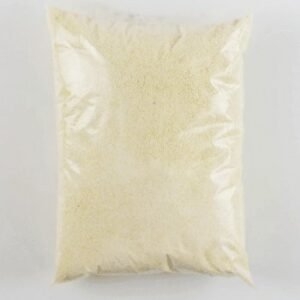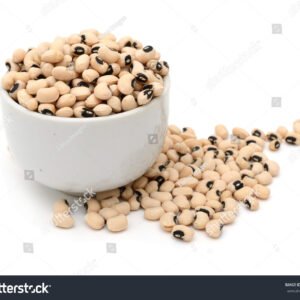Currently Empty: $0.00
Yellow Gari is a popular West African food made from cassava (a starchy root vegetable) that has been grated, fermented, dried, and toasted. Gari is a staple food in many African countries, particularly in Nigeria, Ghana, and other parts of West Africa. The yellow variety of Gari gets its distinctive color from the addition of palm oil, which gives it a unique flavor, texture, and appearance.
110 in stock
| Standard Delivery (Signed for) | Delivered within 3-5 working days |
| Express Delivery (Standard Parcels) | Delivered within 1-2 working days |
| Extra-Large Parcels (Signed for) | Delivered within 3-5 working days |
| Furniture | Delivery usually takes place within 2 weeks. |
Free Shipping
Decor Outdoor offers free regular shipping on all orders shipped to residential or commercial addresses within the contiguous United States. Orders are delivered Monday through Friday (excluding holidays).Drop Shipping
We are an online-only luxury furniture and lighting boutique, and do not have a warehouse. Consequently, all orders are drop shipped directly from our manufacturers to your door. If your order includes items from more than one manufacturer, you will receive multiple deliveries. Because we are dependent on the on-hand inventory of our manufacturing partners, some items listed on our site may not actually be available right away. Please call us at 888.784.4644 or via our contact form with any stocking questions and we'll get in touch with the appropriate manufacturer for answers, before you place your order.Ground Shipping
Small parcel items ship regular ground via delivery services such as FedEx, UPS or DHL. Orders typically take 2-3 business days to process and in-stock items will usually be delivered 3-5 days from the date that they ship (depending on origin and destination). If there is a delay, you will be notified by email. No signature is required for standard ground shipping, so you may want to make arrangements to have packages brought inside soon after delivery, if you are unable to receive it in person.Description
Ingredients:
Cassava: The main ingredient used to make Gari, a tuber that is rich in carbohydrates but lacks significant protein or fat. It is processed to remove harmful toxins like cyanide.
Palm Oil: For Yellow Gari, palm oil is added during the roasting or toasting process. The oil imparts a golden-yellow color to the Gari and gives it a unique flavor.
Nutritional Content:
Yellow Gari, like regular Gari, is primarily composed of carbohydrates from the cassava, making it an energy-dense food. It also contains small amounts of fats and proteins, depending on the processing methods used. The palm oil adds some beneficial fats, especially monounsaturated fats and vitamin E, as well as antioxidants from the carotenoids in the palm oil.
Carbohydrates: Gari is a rich source of starch, providing a quick source of energy.
Fats: The addition of palm oil increases the fat content in Yellow Gari, including healthy fats like oleic acid (an omega-9 fatty acid) and palmitic acid.
Fiber: Gari contains some fiber, though it is lower than in whole cassava because much of the fiber is removed during processing.
Vitamins: The palm oil used in Yellow Gari provides vitamins such as vitamin A (from beta-carotene) and vitamin E, which have antioxidant properties.
Minerals: Gari contains small amounts of minerals like calcium and potassium, though it is not considered a major source of micronutrients.
Health Benefits:
Energy Boost: As a carbohydrate-rich food, Yellow Gari provides a good source of energy, making it an essential part of many West African diets.
Rich in Antioxidants: The carotenoids in palm oil, particularly beta-carotene, provide antioxidant benefits that can support immune health and reduce oxidative stress.
Heart Health: The monounsaturated fats from the palm oil in Yellow Gari may support heart health by helping to lower bad cholesterol (LDL) and increasing good cholesterol (HDL).
Digestive Health: Although Gari is low in fiber compared to whole cassava, it still contains some fiber, which is important for promoting digestion and regular bowel movements.
Yellow Gari is a versatile food that can be eaten in various ways, either as a side dish or a main course. It is typically enjoyed with:
Gari Soaked in Water (Eba): A common way to eat Yellow Gari is by soaking it in water to make a paste-like dish called Eba. The Gari is poured into a bowl of warm or hot water, stirred until it becomes thick, and then served with soup or stew.
Gari with Milk or Sugar: In some cultures, Yellow Gari is eaten as a snack or breakfast by soaking it in milk and sweetening it with sugar or honey.
Gari and Groundnut: Yellow Gari is often eaten with groundnuts (peanuts), especially in West Africa, where it is mixed with groundnut paste or a sprinkle of roasted peanuts.
As a Side Dish: It can be served alongside meats, fish, or vegetables as a starchy accompaniment to various meals.
Gari Porridge: A traditional dish made by cooking Gari with water, milk, sugar, or spices. This porridge can be eaten as a dessert or a snack.
Cultural Significance:
Yellow Gari is an important staple in West African cuisine and is commonly consumed across various countries, including Nigeria, Ghana, Cameroon, and Sierra Leone. It plays a vital role in many social and cultural events, such as festivals, weddings, and communal gatherings. It is often shared with family and friends during meals, making it a food that brings people together.
Summary:
Yellow Gari is a nutritious, versatile, and widely consumed staple food in West Africa, made from grated and fermented cassava, with the addition of palm oil to give it a golden color and distinctive flavor. It is rich in carbohydrates, provides a good source of energy, and contains antioxidants and healthy fats. Whether eaten as Eba, with milk and sugar, or with groundnuts, Yellow Gari is an essential part of many people’s diets, offering both nourishment and cultural significance. readmore
Additional information
| Weight | 12 kg |
|---|---|
| Dimensions | 7 × 8 × 21 cm |
| weight | 32 oz / 907g |








There are no reviews yet.